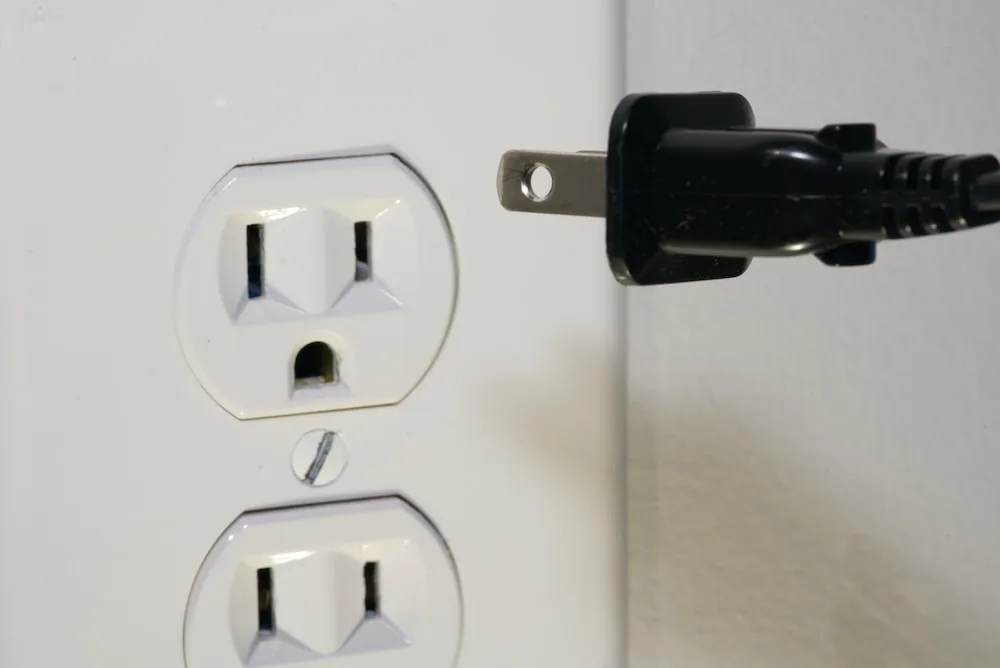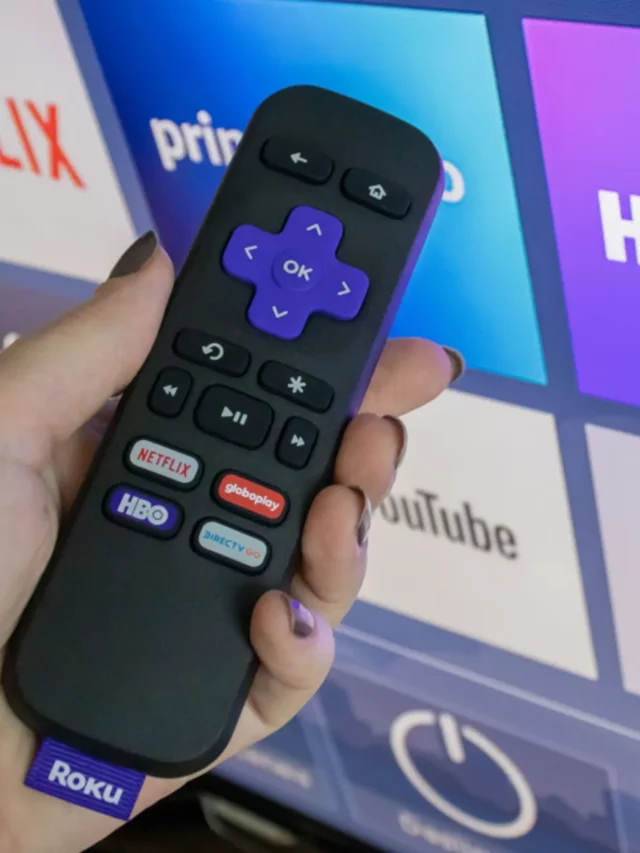A Roku TV refusing to turn on can be frustrating. First, check the power cable or try a different outlet. Next, ensure the remote has fresh batteries and isn’t interfering with other devices. If those fail, a power cycle by unplugging the TV for a minute might do the trick.
So, if you’re experiencing the frustration of a Roku TV that won’t turn on, keep reading. We’ve covered you with a comprehensive guide to identify the reasons behind this issue and offer practical solutions to get your Roku TV back to its fully functioning state.
| Issue | Solutions |
|---|---|
| A power surge or electrical problem | Ensure proper ventilation, clean dust/debris, and cool down the TV. |
| Power cable issues | Use surge protectors, check wiring, and consult an electrician. |
| A power surge or electrical problem | Replace the batteries in the remote control. |
| Battery issues | Repair the remote control with the Roku TV. |
| Pairing problems | Restart TV, update the software, and perform a factory reset. |
| System update errors | Check the power cable for damage or lost connections. |
| Software glitches or freezes | Ensure proper ventilation, clean dust/debris, and cool down TV. |
| Defective components | Contact Roku support for repair or replacement. |
| Overheating issues | Ensure proper ventilation, clean dust/debris, and cool down the TV. |
Possible Reasons for Roku TV Not Turning On
The following are possible reasons for Roku TV not turning on:
Power-related issues
Following are some power-related issues for why your Roku TV isn’t working:
Power outlet problems:
The TV may not turn on if the power outlet it is connected to isn’t supplying electricity. This could be due to a faulty power outlet or a problem with the electrical supply in your home or building.

Power cable issues:
A damaged or faulty power cable can prevent the TV from receiving power and turning on. This could be due to frayed wires, a loose connection, or other issues with the cable itself.
A power surge or electrical problem:
Power surges or electrical fluctuations can sometimes damage the internal components of the TV, leading to a failure to turn on. This can occur due to lightning strikes, faulty wiring, or other electrical issues.
Remote control problems
One possible reason for a Roku TV not turning on could be remote control problems:
Battery issues
Battery issues may be the culprit if your remote is an issue, as depleted or improperly inserted batteries can prevent the remote control from sending the necessary signals to power the TV. To eliminate this possibility, it’s important to ensure that fresh batteries are correctly installed in the remote control.
Pairing problems
Another remote control-related issue could be pairing problems. If the remote control is not properly paired with the Roku TV or loses its pairing, it may be unable to turn on the TV.
Following the instructions provided by Roku for pairing the remote control or attempting to repair it could help address this issue. Troubleshooting
Software or firmware issues
The following are software issues or firmware issues that can be encountered in case your Roku TV isn’t turning off:
System update errors
Like other electronic devices, Roku TVs can experience software or firmware problems that can hinder their normal functioning. One typical issue is related to system update errors. When the TV encounters difficulties updating its software, it can result in instability, crashes, or malfunctions of certain features.
Software glitches or freezes
Start restarting the device to address software glitches or freezes on your Roku TV. Simply unplug the TV from the power source, wait for a few moments, and plug it back in. This can help resolve temporary software issues.
If the problem persists, consider updating the Roku software to the latest version. Go to the Settings menu, select System, and choose System Update. .

Hardware malfunctions
Roku TV malfunctioning may indicate underlying hardware issues requiring troubleshooting or repair. Following are some hardware malfunctions one can encounter:
Defective components
In the event of hardware malfunctions, Roku TVs may experience issues where they fail to power on. Defective components represent a common cause for this problem, as they can result in a complete inability to turn on the TV. Faulty power supply units, malfunctioning motherboards, or other internal hardware issues could be to blame.
Troubleshooting and Solutions
Following are some ways through which you can troubleshoot the issues and find the solutions:
Power-related solutions
Ensure the power cord is securely connected to the Roku TV and the electrical outlet. Check if the outlet is functioning properly by plugging it into another device.
Try using a different power cord or adapter to rule out any issues with the original one. Verify if a power switch on the TV or remote needs to be turned on.
Remote control solutions
Replace the batteries in the remote control with fresh ones. Ensure there are no obstructions between the remote and the Roku TV. Pair the remote control with the TV again by following the manufacturer’s instructions. Consider using the mobile app for Roku to control the TV instead of the physical remote.

Hardware solutions
Check all cable connections between the Roku TV and external devices, such as a cable box or gaming console, ensuring they are properly plugged in. If your TV has HDMI ports, try connecting a different HDMI cable or using a different HDMI port.
If necessary, reset the Roku TV to factory settings, usually done through the TV’s settings menu. If none of the above solutions work, contacting Roku support or a professional technician may be necessary, as it could indicate a hardware malfunction.

Roku TV Insights
- Roku TV is a type of smart TV with Roku streaming built-in. This means it has all the features of a smart TV, like access to streaming services and apps, but with Roku’s simplicity and ease of use.
- Roku TV is the #1 smart TV platform in the United States. This is likely due to its focus on ease of use and affordability. Roku TVs are available in a variety of brands and screen sizes.
- Roku TVs offer various streaming channels, including free, live, and premium options. You can watch in-season shows, news, movies, sports, and more on Roku TV free channels. You can browse over 350 live TV channels, including channels from an HD antenna.
FAQS
Why won’t my Roku TV turn on but the red light is on?
If your Roku TV has a red light on but won’t turn on, it could indicate a power-related issue. Check if the power outlet is working, ensure the power cable is securely connected, and try a power reset by unplugging the TV and plugging it back in. If the problem persists, it may require further troubleshooting or professional assistance.
How do you get a Roku TV to turn on?
To get a Roku TV to turn on, make sure it’s properly connected to a power source, ensure the power cable is securely plugged in, and press the power button on the TV or the remote control. If the TV still doesn’t turn on, follow the troubleshooting steps mentioned earlier or refer to the user manual for specific instructions.
Why is my Roku TV on a black screen?
If your Roku TV is showing a black screen, it could be due to a few reasons. First, check if the TV is receiving a signal from the HDMI or other input source. Ensure the correct input source is selected. If the issue persists, try power cycling the TV, updating the software, or checking for any loose connections. If none of these steps resolve the problem, contacting Roku support may be necessary.
Conclusion
- Common reasons for Roku TV not turning on include power outlet problems, power cable issues, power surge or electrical problems, remote control battery issues, pairing problems, and software or hardware malfunctions.
- Troubleshooting steps are important to identify and resolve the specific issue. These steps may include checking power connections, replacing batteries, re-pairing the remote, performing software updates or factory resets, and addressing hardware malfunctions.
- If the Roku TV still doesn’t turn on after troubleshooting, it may be necessary to contact Roku support. They can provide further assistance, diagnose complex problems, offer potential solutions, or recommend professional repair services.
- Roku support can be reached through their website, customer support hotline, or online community forums. They have resources and expertise to help resolve issues specific to Roku devices.
- Persistent problems may require professional assistance. If the Roku TV is under warranty, contacting Roku support for warranty service or seeking help from a qualified technician can be beneficial.

